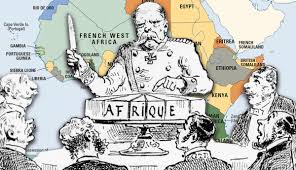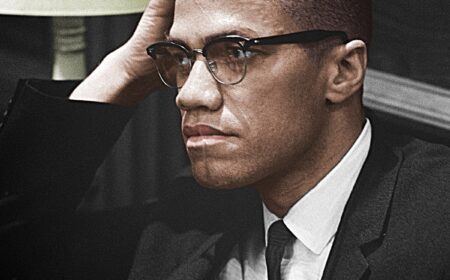/cdn.vox-cdn.com/uploads/chorus_image/image/57354303/shutterstock_592618877.0.jpg)
“I believe in black cities, because I believe in me”
With cities across North America bidding to host Amazon’s second headquarters, one of the dominant narratives across applications is the idea that Amazon should “take a second look” at certain cities. The applications implore the company to go beyond outdated ideas of what a certain city represents, and instead look at the municipality—and its people—with fresh eyes.
Writer, educator, and researcher Andre Perry believes there’s another type of city that deserves a fresh look: the black-majority cities of the U.S., from the thousands of small towns spread throughout the Southeast to the handful of larger cities in the Midwest, such as Detroit and Gary, Indiana, that Perry says have unrealized potential. He hopes to attract attention with his new research project on the topic.
“I don’t want this project to be about ‘Let’s fix black cities,’” says Perry, a David M. Rubenstein fellow at the Brookings Institute’s Metropolitan Policy Program. “That’s what we often do to black people. These places are worthy of investment and risk-taking.”
During the era of Black Lives Matter, Perry believes it’s also important to acknowledge that black cities matter, too. African Americans’ lives have been negatively influenced by redlining, harmful zoning, and disproportionate exposure to pollution. So if place matters—especially in regards to schooling, housing, and healthcare—local control and the continued existence of these municipalities becomes even more vital.
“The stick-to-itiveness of black communities should be seen as a strength,” he says. “We reward white flight in many cases. We built highways for white flight.”
/cdn.vox-cdn.com/uploads/chorus_asset/file/9551051/metro_20171004_blackcities_all_by_total_population_rev.png) Brookings Institution
Brookings Institution Many of these black-majority places are small towns or inner-ring suburbs that have always had relationships with larger cities nearby. Many of these smaller cities have felt financial pressure to be incorporated into their larger neighbors. And though incorporation has benefits, it can hinder a smaller city’s ability to focus on its specific, local needs. Neither merger nor gentrification are solutions, says Perry.
Over the course of the next six months, Perry will release a series of research reports—one every six weeks—looking at different aspects of black-majority cities: demographic information; when they became majority black, either due to in-migration or white flight; whether they’re thriving or struggling economically; and deeper analysis about how to improve upon the strengths of these communities.
This isn’t about comparing the outcomes of black and white residents of different cities. Black cities have certainly been shaped by racism, but black communities aren’t defined by it, Perry writes. It’s about understanding black-majority cities, creating a portrait of where they are today, and figuring out what strategies can build upon their strengths and support their development. If these cities aren’t going away, how do we make their economies work, Perry asks.
“I’m not trying to be a voyeur and go on safari,” he says. “I believe in black cities because I believe in me. I came from Wilkinsburg [a black-majority city outside of Pittsburgh]. I’m here because I have skills—the same skills developed by thousands of others from my city.”
Perry sees the current fervor over Amazon as an interesting window to examine the issues central to this study. He says that places like Wilkinsburg, Pennsylvania; East Cleveland, Ohio; and Ferguson, Missouri, can and should make a case for a company like Amazon. They have assets, they have resources, and they have a workforce that can be trained to take many of the mid-tech and low-tech roles companies are looking to fill.
People will “put on their hard hats and work,” Perry says, whether it’s in the factory or a lab. The HQ2 contest is currently framed around finding a city that’s already winning, he says, instead of helping a city that needs it and taking on a more social-justice-focused mission.
“How can we compel companies to be a part of the workforce-development pipeline that’s currently failing a large part of America?” he says. “These black cities that have long been ignored should be the focus of investment, of risk-taking, of workforce development. This isn’t about capturing people that are work-ready, this is about training future workers.”
Perry came from the education world, and worked with charter schools in Michigan and Louisiana. And while improving education is an imperative, he believes bringing development, jobs, and stability can help turn around struggling cities more quickly, and should be a big focus. Children don’t live in schools, they live in communities, he says, so he wants to see increased focus on building capacity and improving social mobility.
“Hire people, train people, and change policy that makes their lives easier,” he says. “There’s an assumption that cities will get bigger, or that small cities aren’t equipped for change and will just die on the vine. That thinking is flawed. Those are choices that we make.”





